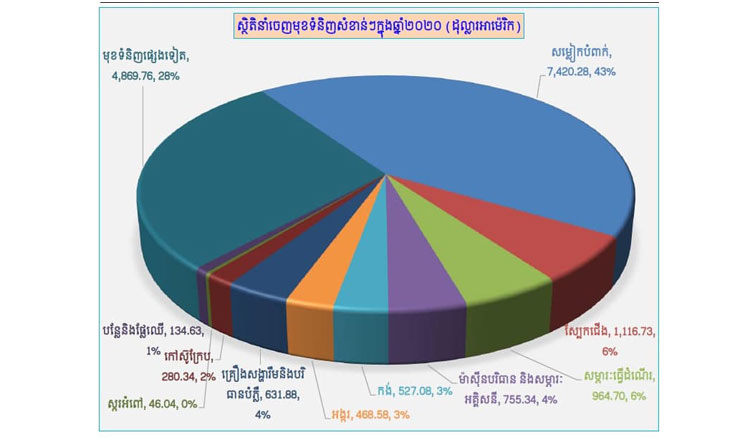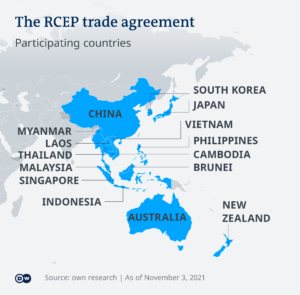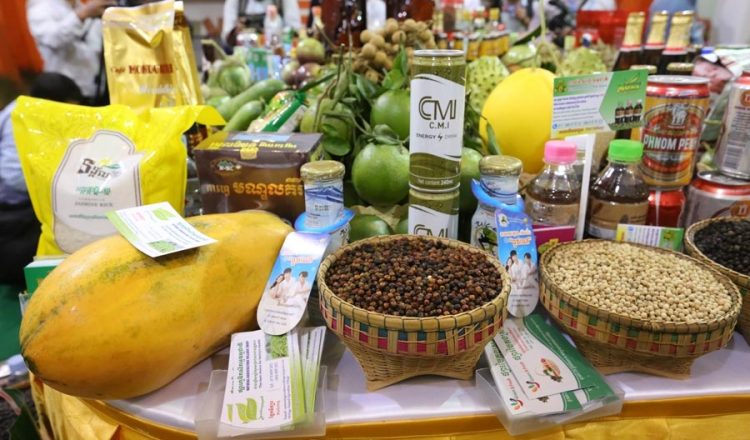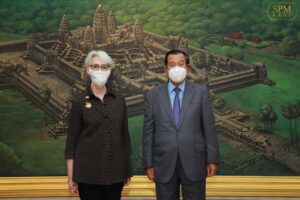Positive outlook for Kingdom’s trade
Despite the global economic fallout from the COVID-19 pandemic, the Kingdom’s total trade volume remains positive, reaching $35.8 billion last year, a rise of 2.5 percent compared with the year before, according to the annual report from the Ministry of Commerce (MoC).
Cambodia’s total exports were worth $17.21 billion, up 16.72 percent year-on-year in 2020. Total imports were valued at $18.59 billion, down 7.84 percent.
Minister of Commerce Pan Sorasak said in the report that trade development is a government priority especially in the context of the market economy because it plays a key role in boosting growth and socio-economic development.
He added the Ministry of Commerce has been putting much effort into trade development in the region and internationally as well as promoting production capability and sustainable supply chains in the market as part of a wide-ranging economic transformation.
Sorasak added the ministry has also promoted the efficient delivery of commerce services, enhanced intellectual property rights, strengthened consumer protection and competition as well as maintained the safety and quality of products to ensure people’s well-being.
“Despite the fact that the country is facing the spread of COVID-19 and is stuck on some market export destinations, Cambodian exports and imports performed significantly well in 2020,” said Sorasak.
According to the MoC’s figure, the main markets for Cambodian products are the US, the European Union, Japan, Thailand, China, the United Kingdom and Vietnam.
In 2020, Cambodia exported goods to the US worth $5.25 billion, a year-on-year (YoY) increase of 19.4 percent, followed by the EU at $3.2 billion (down YoY 17.7 percent), Japan at $1 billion (down 7.13 percent YoY), China at $1.08 billion (up 8.11 percent YoY), the UK at $826 million (down 15.5 percent YoY), Thailand at $650 million (up 29 percent YoY) and Vietnam at $385 million (up14.9 percent YoY). Other countries and regions accounted for the remainder.
The report added that last year Cambodian imports were mostly from China, accounting for $7 billion (down 6.7 percent YoY), followed by Thailand at $2.83 billion (down 12 percent YoY), and Vietnam at $2.63 billion (down 3.1 percent YoY). Japan came in at $637 million (down 27 percent Y0Y), the EU at $659 million (down 6 percent YoY), South Korea at $544 million (down 18.8 percent YoY) and the US at $250 million (down 19.4 percent YoY). Again, other countries and regions accounted for the remainder.
The Kingdom’s major export products remain garments at $7.42 billion (a YoY decline of 10.24 percent), footwear at $1.11billion (down 11.6 percent YoY), travel products at $964 million (down 10.6 percent YoY), electrical appliances at $755 million (up 31 percent YoY), bicycles at $527 million (up 27.8 percent YoY), milled rice at $468 million (up 11 percent YoY), furniture at $631 million (up 50 percent YoY), rubber $280 million ( up 25 percent YoY), sugar cane at $46 million (down 15 percent YoY) and vegetables and fruits at $134million (up 103 percent YoY). Other commodities reached $4.86 billion (a YoY rise of 147 percent).
Cambodia mostly imported textile products ($4.3 billion), construction materials ($1 billion), steel ($403 million), cement ($66 million), beer ($17 million), medicines ($393 million), electronic and electrical appliances ($2.38 billion), automotives ($1 billion) and other goods costing $8.22 billion.
This week, a World Bank report forecast the economy is projected to recover and grow modestly, expanding at 4 percent this year, after contracting by 3.1 percent in 2020. The World Bank added that agriculture will grow by 1.1 percent, industry by 6.7 percent and services by 2.6 percent in 2021. However in 2022, the World Bank forecast that real gross domestic product growth of Cambodia will reach 5.2 percent, contributed to by an improvement in agriculture of 1 percent, of industry by 7.4 percent and services growth of 4.8 percent.
The World Bank said the authorities are taking steps to attract further investment and promote trade by planning to introduce a new investment law in the second half of 2021, boosted by the recently signed Cambodia-China free trade agreement and the Regional Comprehensive Economic Partnership. Under Cambodia’s economic recovery plan, efforts are under way to boost competitiveness through investment climate reforms and the leveraging of digital technologies. Khmer Times







